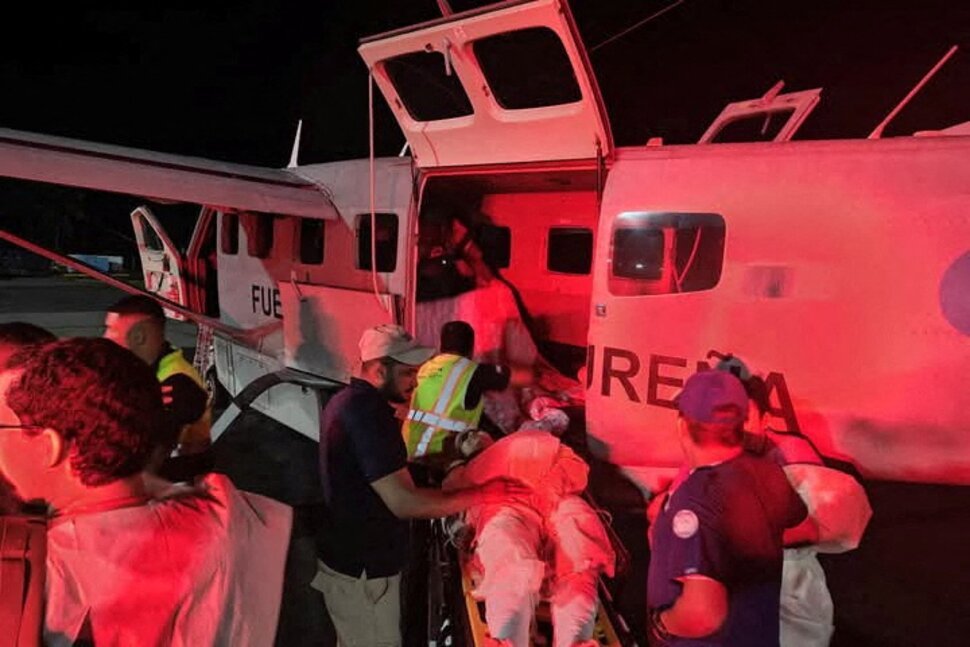
A devastating plane crash occurred off the coast of Roatán, Honduras, on Monday evening, when a Jetstream 32 aircraft plunged into the sea shortly after takeoff. The aircraft, carrying 17 people, including 15 passengers and two crew members, was en route to La Ceiba, a city located on the northern coast of Honduras. This tragic incident has sent shockwaves through the local community and beyond, prompting an immediate response from emergency services and government officials.
Crash Details
According to Honduras Civil Aviation (HCA), the accident took place at 6:18 p.m. local time, mere moments after the aircraft lifted off from Juan Manuel Gálvez International Airport in Roatán. Witnesses reported seeing the plane struggling to gain altitude before it suddenly went down into the water. Authorities are currently investigating the cause of the crash, though no official determination has been made yet. The investigation will likely examine factors such as mechanical failure, weather conditions, and pilot error.
The Jetstream 32, a twin-turboprop aircraft, is commonly used for short-haul regional flights. Aviation experts will analyze maintenance records, communication logs, and flight data to understand what may have led to the tragic incident. The aircraft was operated by the Honduran airline Lanhsa, which has been involved in previous aviation incidents in the region.
Emergency Response
Emergency response teams rushed to the scene, coordinating efforts to rescue the passengers and crew. Honduran police, along with local emergency responders, worked tirelessly to pull survivors from the wreckage. Images of Plane from the scene showed rescuers carrying injured individuals from the water to safety. The rescue efforts were complicated by the Plane location in the sea, with divers facing zero visibility during their operations.
As of the latest reports, 12 individuals have perished in the crash, while five people have survived. One victim’s body remains unaccounted for, and recovery operations are ongoing at the site of the crash on Honduras. The survivors were transported to nearby hospitals for treatment.
Government Response
In response to the tragedy, Honduras President Xiomara Castro issued a statement confirming that the government had activated an Emergency Operations Committee to manage the crisis. “They have immediately arrived at the scene of the plane crash that occurred 1 km from Roatán International Airport and are tirelessly assisting in the unfortunate incident,” President Castro said
The Honduran military and Coast Guard were also deployed to assist with rescue and recovery efforts. Public hospitals in San Pedro Sula and La Ceiba have been prepared to receive and treat injured passengers. The government’s swift response underscores its commitment to supporting victims and their families during this difficult time Honduras.
Investigation Underway
Aviation experts and investigators are working diligently to determine the cause of the accident. Preliminary reports indicate that the plane crashed seconds after takeoff, but authorities are examining all possible factors. The investigation will be crucial in understanding Plane what led to this tragic incident and in preventing similar accidents in the future.
History of Air Safety Concerns
This accident comes amid growing concerns over aviation safety in the region. Honduras has experienced multiple small aircraft incidents over the years, raising questions about airline regulations and oversight. While major commercial carriers maintain strict safety protocols, smaller regional flights often operate with fewer resources and regulatory scrutiny.
Additionally, this crash follows a series of recent aviation incidents worldwide. Just last week, an American Airlines Plane flight caught fire at Denver International Airport, underscoring ongoing concerns about aircraft safety and maintenance. These incidents highlight the need for continuous improvement in aviation safety standards globally.
Community and Global Reactions
News of the crash has sent shockwaves through the local community and beyond. Families of the passengers are anxiously awaiting updates on the status of their loved ones, while government officials work around the clock to provide support to victims and their families.
International aviation bodies, including the International Civil Aviation Organization (ICAO), have expressed condolences and offered technical support in the investigation. Several neighboring countries have also pledged assistance if needed. The global response reflects the solidarity and cooperation that are essential in times of crisis.
Looking Ahead
As the investigation unfolds, authorities are urging patience and cooperation from the public. Rescue efforts remain a priority, and officials are committed to determining the cause of the crash to prevent future tragedies. The aviation community is mourning the loss and injury of those aboard the ill-fated flight, hoping for swift answers and improvements in safety measures moving forward.
In the aftermath of this tragedy, Honduras and the global aviation community will need to reflect on safety protocols and regulatory frameworks to ensure that such incidents are minimized in the future. The resilience and unity shown by the people of Honduras and the international community will be crucial in the healing process and in moving forward from this devastating event.